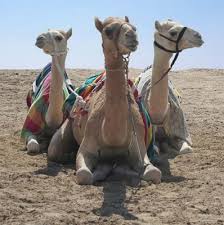Escherichia coli O157:H7, non-O157 E. coli, and Campylobacter spp. are among the top-ranked pathogens that threaten the safety of food supply systems around the world.
 The associated risks and predisposing factors were investigated in a dynamic animal population using a repeat-cross-sectional study design.
The associated risks and predisposing factors were investigated in a dynamic animal population using a repeat-cross-sectional study design.
Animal and environmental samples were collected from dairy and camel farms, chicken processing plants, and abattoirs and analyzed for the presence of these pathogens using a combination of bacterial enrichment and real-time PCR tests without culture confirmation. Data on putative risk factors were also collected and analyzed.
E. coli O157:H7 was detected by PCR at higher levels in sheep and camel feces than in cattle feces (odds ratios [OR], 6.8 and 21.1, respectively). Although the genes indicating E. coli O157:H7 were detected at a relatively higher rate (4.3%) in fecal samples from dairy cattle, they were less common in milk and udder swabs from the same animals (1 and 2%, respectively).
Among the food adulterants, E. coli O103 was more common in cattle fecal samples, whereas O26 was more common in sheep feces and O45 in camel feces compared with cattle (OR, 2.6 and 3.1, respectively). The occurrence of E. coli in the targeted populations differed by the type of sample and season of the year.
Campylobacter jejuni and Campylobacter coli were more common in sheep and camel feces than in cattle feces. Most of the survey and surveillance of E. coli focused on serogroup O157 as a potential foodborne hazard; however, based on the PCR results, non-O157 Shiga toxin–producing E. coli serotypes appeared to be more common, and efforts should be made to include them in food safety programs.
Risk of Escherichia coli O157:H7, non-O157 shiga toxin–producing Escherichia coli, and Campylobacter spp. in food animals and their products in Qatar
Journal of Food Protection®, Number 10, October 2015, pp. 1776-1924, pp. 1812-1818(7)
Mohammed, Hussni O.; Stipetic, Korana; Salem, Ahmed; McDonough, Patrick; Chang, Yung Fu; Sultan, Ali
http://www.ingentaconnect.com/content/iafp/jfp/2015/00000078/00000010/art00005
